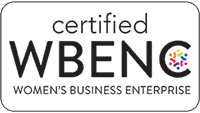It's no secret that the cost of living is putting pressure on many of our wallets. Gas prices continue to rise, food staples at the grocery store have increased, and the cost of services is higher. Millions of people are experiencing financial stress related to inflation.
Finances are a common cause of a stress to begin with — nearly 72% of adults report feeling stressed about money at least some of the time, and nearly 25% say they experience extreme stress about money. Luckily, as an employer, you can take steps to help relieve the stress associated with the rising cost of living.
As you look to address the health and wellness of your workforce this year, make sure your employee wellness program covers financial wellness, one of the 6 areas of well-being.
Financial wellness is the ability to meet basic needs and manage money for the short and long-term. The financial dimension encompasses all aspects of well-being pertaining to finances, including knowledge and skills of financial planning, and managing expenses.
All 6 areas of well-being are connected — you can’t really improve your mental health without prioritizing financial health, i.e. budgeting can help you manage your stress levels.
As we look into the second installment of our wellness series, we're diving deeper into financial wellness and how you can implement it in your employee wellness program.
Encouraging Financial Wellness in the Workplace
Just like regular exercise and a healthy sleep schedule, financial well-being is critical not just for employee well-being, but for an organization's success as well. With 41% of full-time employees living paycheck to paycheck, financially stressed workers are costing companies over $240 billion a year in lost productivity.
Prioritizing living wages and offering educational financial resources will better position your company to retain and empower your employees. According to a study by Willis Towers Watson, organizations that address financial well-being can reap the advantage of higher employee engagement, fewer absences, and greater levels of productivity.
One of the ways you can address financial wellness in your organization is by offering first-person financial wellness training. Offer on-site financial planning seminars on topics like budgeting, dollar-cost averaging, asset allocation, and retirement planning. You can also bring in an IRS or tax expert; this will help your staff feel less stressed during tax season.
Another way you can improve financial wellness is by making sure your tax-saving benefits measure up. During a time when companies are slashing big benefits, differentiate yourself from the competition by considering a thoughtful 401(k) program — and if you’re in the position to do so, match contributions to push employees in.
If applicable, consider contributing to your employees’ HSAs — enough to cover the deductible would be ideal. It's also important to note that by offering continuous education on 401(k)s and HSAs, you can ensure employees get the biggest benefit from your services.
If you want to have some fun with your employees and encourage friendly competition, you can offer financial challenges within your employee wellness program.
Here are some challenge ideas:
— Attend an on-site financial education seminar
— Learn about your company’s financial benefits (could be a webinar, online resources or in-person meeting)
— Set a monthly savings goal
— Pack a lunch instead of picking up takeout or dining out
These financial wellness initiatives will encourage your employees to improve their finances and make them feel more productive, overall boosting your staff's morale.
Each month, we'll continue to break down these 6 categories of well-being in greater detail — be sure to follow along and don't miss out on how you can invest in wellness to help your employees thrive.
Need some help? Let us guide you. At OnSite Wellness, employee health and wellness is our specialty. We can help you implement the 6 areas of wellness in your program so you can build a happier, healthier workforce.
Reach out today to get started.
-1.png?width=300&name=1127895_OSW%20Tagline%20Logo_081021%20(1)-1.png)


